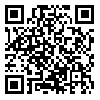شمارۀ جدید فصلنامه (زمستان 1403) منتشر شد
Volume 14, Issue 1 (10-2023)
Social Problems of Iran 2023, 14(1): 237-260 |
Back to browse issues page
Download citation:
BibTeX | RIS | EndNote | Medlars | ProCite | Reference Manager | RefWorks
Send citation to:



BibTeX | RIS | EndNote | Medlars | ProCite | Reference Manager | RefWorks
Send citation to:
Karami M, Ghazinejad M, Azam Azadeh M. (2023). Religious identity and social status: feeling of social exclusion among Shia and Sunni students (Case study: students of social science of Tehran universities). Social Problems of Iran. 14(1), 237-260. doi:10.61186/jspi.14.1.237
URL: http://jspi.khu.ac.ir/article-1-3631-en.html
URL: http://jspi.khu.ac.ir/article-1-3631-en.html
1- PHD student of Sociology, Alzahra university, Tehran, Iran , mhnz67@gmail.com
2- Associate Professor of Sociology, Alzahra university, Tehran, Iran
2- Associate Professor of Sociology, Alzahra university, Tehran, Iran
Abstract: (1432 Views)
Although it can be argued that inequality, distance, and social exclusion have always existed in societies, one cannot ignore reflecting on why, how, and the consequences for the various groups and social systems that are so diverse today. The aim of this study is to explain the relationship between religious identity and the feeling of social exclusion by considering the mediating variable of social status among two groups of Shiite and Sunni students. The statistical sample includes 269 graduate students of the faculties of social sciences of the three universities of Allameh Tabatabai, Tehran and Beheshti, which was determined through the sampling table of Dovas with an error of 0.6. According to the results of two-variable analysis, there is a direct relationship between the level of religious identity and the feeling of social exclusion and an inverse relationship between social status and the feeling of social exclusion. Multivariate regression analysis indicates that the variables included in the equation were able to explain 39% of the variance of the changes related to the dependent variable. The results of path analysis also indicate that the variables of religious identity and ethnicity are directly related and the variables of social status are inversely related to the feeling of social exclusion.
Type of Article: Original Research |
Subject:
Social policy & welfare
Received: 2023/05/2 | Accepted: 2023/09/28 | Published: 2023/10/9
Received: 2023/05/2 | Accepted: 2023/09/28 | Published: 2023/10/9
References
1. Amin, S. (2019). The endless nexus between ethnic diversity, social exclusion and institutional quality of Pakistan. International Journal of Sociology and Social Policy, 39(3/4), 182-200. [DOI:10.1108/IJSSP-06-2018-0108]
2. Bellani, L., & D'Ambrosio, C. (2011). Deprivation, social exclusion and subjective well-being. Social indicators research, (104), P 67-86. [DOI:10.1007/s11205-010-9718-0]
3. Bracic, A. (2022). Ethnicity and Social Exclusion. Nationalities Papers, 1-12. [DOI:10.1017/nps.2022.72]
4. Greve, B. (2002). Is a supranational strategy for social inclusion possible?. Research Paper from the Department of Social Sciences, Roskilde University, (6), 1-23.
5. Jirón, M., P., Lange, V.C., & Bertrand, S.M. (2010). Exclusión y desigualdad espacial: Retrato desde la movilidad cotidiana. Revista invi, 25(68), 15-57. [DOI:10.4067/S0718-83582010000100002]
6. Kelles-Viitanen, A. (1999). Social inclusion of vulnerable groups. In background paper for the ADB/World Bank Social Forum, Manila.
7. Silver, H. (1994). Social exclusion and social solidarity: Three paradigms. Int'l Lab. Rev. (133), 5-6.
8. Wright, N., & Stickley, T. (2013). Concepts of social inclusion, exclusion and mental health: a review of the international literature. Journal of Psychiatric and Mental Health Nursing, 20(1), 71-81. [DOI:10.1111/j.1365-2850.2012.01889.x]
Send email to the article author
| Rights and permissions | |
 |
This work is licensed under a Creative Commons Attribution-NonCommercial 4.0 International License. |







